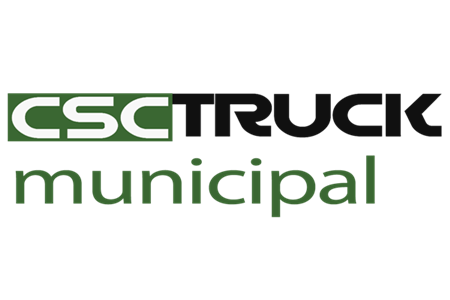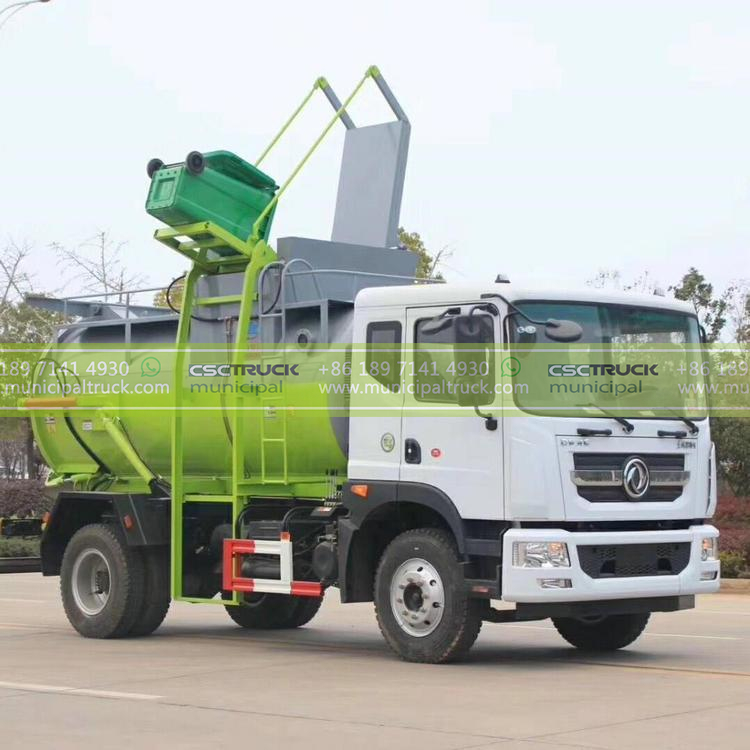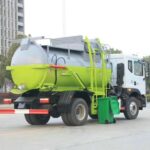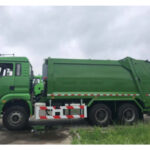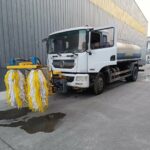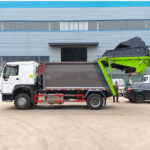The relentless demand for cost-effective, timely, and safe residential waste collection places immense pressure on municipal fleets and private contractors. Side loader garbage trucks (SLTs), specifically engineered to service standardized curbside carts, have emerged as the backbone of efficient automated collection systems. Their design evolution focuses on maximizing productivity per route through integrated mechanical intelligence, ergonomic safety, and data-driven operations, fundamentally transforming how communities manage daily waste streams.
Core Mechanical & Technological Efficiency Drivers
1.1 Advanced Automated Cart Engagement Systems
The defining feature of an SLT is its robotic arm, but not all arms deliver equal efficiency. Third-generation programmable arms now incorporate multi-axis articulation, enabling precise cart access around vehicles, mailboxes, and landscaping obstacles without repositioning the truck – a critical time-saver on congested suburban streets. Integrated sensor-based object detection prevents collisions with fixed structures during the lift cycle, eliminating costly damage delays. Crucially, adaptive grip pressure technology automatically adjusts clamp force based on cart weight and detected instability, ensuring secure handling of overloaded or damaged carts while minimizing spillage and cart replacement costs. This seamless, single-operator automation reduces collection time per stop by 40-60% compared to manual rear-loaders, directly translating to fewer trucks and drivers needed per route district.
1.2 Optimized Hopper & Body Design for Continuous Flow
Efficiency extends beyond cart pickup to waste processing within the truck. Low-friction, high-strength alloy steel hopper walls with steep angles promote rapid material flow into the compaction body, preventing hang-ups that require operator intervention. Dynamic compaction control systems use load sensors and hydraulic pressure monitoring to optimize ram stroke cycles based on real-time waste density – applying maximum force only when necessary, reducing cycle time by 15-20% and cutting fuel consumption during compaction phases. Furthermore, volumetric payload monitoring via ultrasonic sensors or LiDAR provides live capacity data, enabling route optimization to minimize trips to the disposal site. The integration of hopper design, intelligent compaction, and payload tracking creates a continuous, high-throughput waste processing system that maximizes payload per route hour while minimizing idle time and unnecessary compaction energy.
1.3 Powertrain & Hydraulic System Integration
Underlying these functions is a purpose-built powertrain. Eco-mode diesel engines or emerging electric drivetrains (BEV) pair with PTO-driven, variable-displacement hydraulic pumps that deliver high flow at low engine RPM. This configuration allows simultaneous driving and lifting/compaction operations without excessive revving, reducing fuel use by up to 30% during stop-start routes. Regenerative hydraulic systems capture energy during the ram retract cycle, repurposing it for the next compaction stroke or auxiliary functions, further lowering energy waste. Thermal management systems maintain optimal hydraulic oil viscosity across extreme temperatures, ensuring consistent cycle times whether operating in -20°C winters or 40°C summers. This holistic energy management extends component life, lowers operational costs, and ensures reliable performance across diverse service environments.
Operational & Safety Advantages Amplifying Fleet Productivity
2.1 Ergonomic Safety & Reduced Worker Injury Risk
SLTs fundamentally alter worker safety dynamics. By allowing the operator to remain securely within the climate-controlled cab during all cart handling, exposure to traffic accidents, slip/fall hazards, and aggressive animals is virtually eliminated. Arm controls integrated into the driver’s seat console minimize repetitive reaching or twisting motions linked to chronic musculoskeletal disorders. Additionally, remote diagnostic displays alert operators to potential hydraulic leaks or system faults before they become safety incidents. These integrated safety features directly reduce worker compensation claims and lost-time injuries by over 70%, ensuring consistent crew availability and lowering insurance premiums – a critical, often overlooked, efficiency multiplier.
2.2 Data Integration for Precision Fleet Management
Modern SLTs function as connected data hubs. Telematics systems track route completion, cart lifts per hour, fuel/power consumption, and idle time, generating granular performance reports. GPS-enabled route software interfaces with the truck’s systems to automatically flag missed carts or service exceptions, while predictive maintenance algorithms analyze hydraulic pressure curves and component vibration data to schedule servicing before failures occur. This real-time operational intelligence allows supervisors to dynamically reroute trucks based on actual progress, balance workloads, identify underperforming assets, and preempt costly breakdowns, elevating fleet-wide resource utilization.
2.3 Versatility in Specialized Waste Streams
Beyond standard refuse, SLTs adapt to complex urban waste logistics. Interchangeable cartridge-style bodies enable a single chassis to switch between compactors, recyclables cages, or yard waste containers within minutes using integrated hoist systems. For bulkier waste streams, SLTs with integrated grapple arms can service drop-off points or small commercial bins without secondary vehicles. This chassis versatility reduces the need for dedicated specialty trucks, allowing fleets to right-size resources for seasonal or niche collection demands without sacrificing core residential efficiency.
While hook loader trucks provide unmatched flexibility in container interchangeability for transfer stations and industrial sites, and skip loader garbage trucks dominate construction debris removal with their robust lifting capacity, the side loader remains unparalleled in the core task of high-velocity, low-cost, automated curbside collection. Its relentless engineering evolution – blending precision robotics, energy-conscious hydraulics, and proactive data analytics – ensures it continues to set the efficiency benchmark for municipalities where speed, safety, and sustainability are non-negotiable demands of daily service. The hum of its lifting arm at dawn isn’t just collecting trash; it’s executing a meticulously optimized symphony of urban metabolism.
